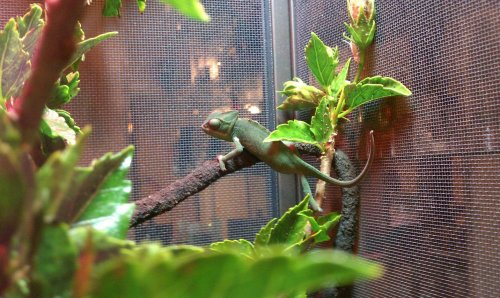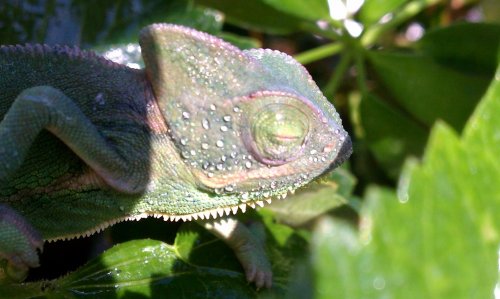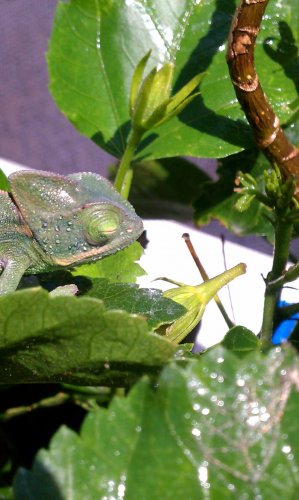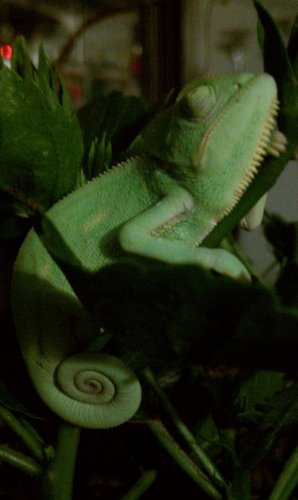lady373
New Member
What is a good way to give Vitamin A to my baby veiled cham? I've only had him in my care for a week but I notice he periodically closes his right eye. I'm worried it may be lack of Vit A but I've read on here that it can be easy to overdose.
Is there any supplements in powder form I could give him at feeding time that has Vit A in it?
Also, I'm giving him the "ExoTerra Calcium" supplement at every feeding. I have yet to give him one with D3 and wonder if it's even necessary since I put him out in the sunlight for most of the day. Eitherway, I do have the calcium with d3 for the winter months when he won't be getting natural sunlight which I will only give him twice a month.
I've read on here that you can shower your cham to help wash things out of their eyes. However, whenever I handle mine (not too often) he gets even more active. I'm a bit unsure how I would go about doing this so I've been misting his cage and he occasionally gets a few drops on him as well.
I may be overreacting, but I am a bit of a parnoid new mom to him. Love him so much, would hate to see anything happen.
Thanks!
Is there any supplements in powder form I could give him at feeding time that has Vit A in it?
Also, I'm giving him the "ExoTerra Calcium" supplement at every feeding. I have yet to give him one with D3 and wonder if it's even necessary since I put him out in the sunlight for most of the day. Eitherway, I do have the calcium with d3 for the winter months when he won't be getting natural sunlight which I will only give him twice a month.
I've read on here that you can shower your cham to help wash things out of their eyes. However, whenever I handle mine (not too often) he gets even more active. I'm a bit unsure how I would go about doing this so I've been misting his cage and he occasionally gets a few drops on him as well.
I may be overreacting, but I am a bit of a parnoid new mom to him. Love him so much, would hate to see anything happen.
Thanks!





